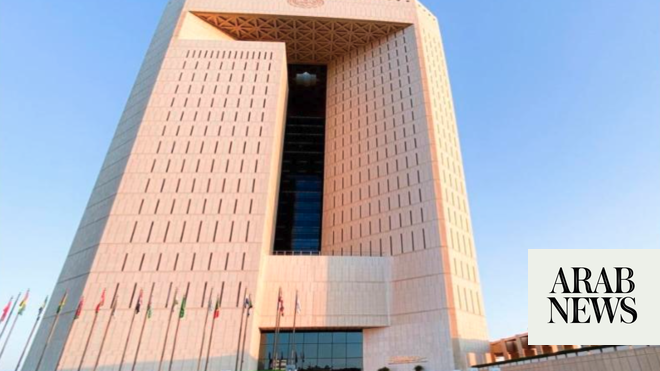Gulf Cooperation Council banks are aiming to diversify their business models and increase profitability by entering fast-growing markets such as Turkey, Egypt and India, a new report has revealed.
Fitch Ratings noted that this growing interest was driven by favorable economic conditions and attractive growth opportunities in these countries.
In particular, the appetite for expansion in Turkiye has increased following macroeconomic policy changes, while interest in Egypt is supported by increased stability and privatization opportunities.
Despite higher acquisition costs in these regions, the report said GCC banks remain focused on tapping the potential of these markets to offset slower growth at home.
According to a June McKinsey report, the GCC banking sector has consistently delivered high returns on equity and impressive valuation multiples by global standards.
The strategic diversification of the GCC economies away from oil, coupled with a prudent regulatory framework, has strengthened banking stability and profitability.
Increased interest rates further increased banks' profits and contributed to their revenues. Over the past decade, banks in the region have outperformed the global average in return on equity, or ROE, maintaining a three- to four-percentage-point advantage through 2022 to 2023.
Although global banking valuations are historically low, GCC banks continue to generate value, with ROE exceeding their cost of equity capital.
Despite record profits driven by increased interest rates for banks globally and in the GCC, McKinsey is warning executives to balance short-term gains with long-term strategic goals.
Investments in transformational change and efficiency are critical to maintaining a competitive advantage when interest rates eventually fall.
GCC banks' primary exposure outside their home region was concentrated in Turkey and Egypt, where they collectively held about $150 billion in assets by the end of the first quarter of 2024, according to Fitch Rating.
This significant presence underlines the strategic importance of these markets for the growth ambitions of GCC banks.
In addition, there is growing interest in India, particularly from UAE-based banks, driven by strong and expanding financial and trade ties between the two countries.
Turkey, Egypt and India boast significantly larger populations compared to the GCC countries, representing greater potential for banking sector growth due to their robust real GDP growth prospects and relatively smaller banking systems.
For example, the ratio of banking system assets to GDP in these countries is below 100 percent, while in the largest GCC markets, the ratio exceeds 200 percent, according to the report.
In addition, the private credit-to-GDP ratio was significantly lower in 2023 at 27 percent in Egypt, 43 percent in Turkey, and 60 percent in India, indicating considerable room for expansion in these banking sectors.
GCC banks are increasingly looking to expand in Turkey due to a favorable shift in the country's macroeconomic policy following last year's presidential election, according to Fitch.
These changes have reduced external funding pressures and improved macroeconomic and financial stability, prompting Fitch to upgrade its outlook for the Turkish banking sector to “improving”.
Fitch expects Turkish inflation to fall from 65 percent in 2023 to an average of 23 percent in 2025, with GCC banks expected to stop using hyperinflation reports for their Turkish subsidiaries by 2027.
Increased stability of the Turkish lira is likely to support earnings from GCC banks' Turkish operations.
At the same time, GCC banks are showing increasing interest in Egypt, which is driven by a better macroeconomic environment, opportunities from the authorities' privatization program and the expansion of GCC corporations in the country.
Fitch recently upgraded its outlook on the operating environment score for Egyptian banks to positive and expects greater macroeconomic stability.
This improvement is attributed to Egypt's landmark foreign direct investment agreement with the United Arab Emirates, a strengthened International Monetary Fund agreement, increased exchange rate flexibility and a stronger commitment to structural reforms.
Fitch expects the Egyptian banking sector's net foreign asset position to improve significantly this year, supported by massive portfolio inflows, remittances and tourism receipts.
Egypt's inflation is expected to fall from 27.5 percent in June 2024 to 12.3 percent in June 2025, which could lead to a reduction in monetary policy interest rates from the fourth quarter of 2024.
Fitch noted that while Egypt's banking market presents high barriers to entry, GCC banks could find opportunities to acquire stakes in the three banks through the authorities' privatization program.
The expansion of GCC companies, especially those from the UAE, could also lead to an increase in the presence of GCC banks in Egypt.
However, rising bank acquisition costs in Turkey, Egypt and India may pose challenges to GCC banks' acquisition plans.
The price-to-book ratio increased, particularly in Turkey and India, reflecting a better macroeconomic outlook and lower operational risks. Acquisitions in these lower-rated markets could potentially weaken GCC banks' viability ratings, depending on the size of the acquired entity and the resulting financial profile.
However, almost all GCC banks' long-term issuer ratings are supported by government support and are unlikely to be affected by these acquisitions. In this context, economic forecasts play a key role in shaping these expansion strategies.
In April, the World Bank updated its growth projections for various countries, reflecting significant opportunities and risks.
For example, Saudi Arabia's economic growth forecast for 2025 was raised to 5.9 percent, up from a previous estimate of 4.2 percent, signaling a strong long-term outlook.
For the UAE, it is now 3.9 percent for 2024, up from 3.7 percent, with a further increase to 4.1 percent in 2025.
Kuwait and Bahrain are also expected to see slight increases in growth, while Qatar's forecast for 2024 has been cut to 2.1 percent but revised upwards to 3.2 percent for 2025.
